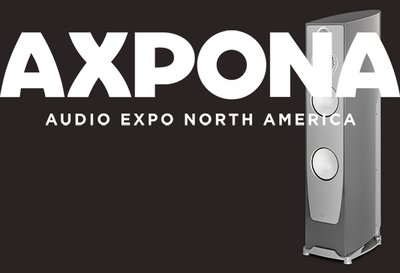AXPONA 2023 report
There wasn’t a lot new at this year’s Axpona show in Chicago, but there was a lot: twelve full floors of audio, hundreds of manufacturers and over ten thousand attendees. Axpona has become easily the best show in North America, I encourage anyone interested in audio to make the trip — nowhere else will you be able to hear so much equipment from so many manufacturers in such a nice space. The show buzzed with the shared energy of so many music lovers in one place.
So nothing game-changing, but a couple of older, largely dismissed technologies may be making a comeback. These are surround sound music, and active speakers. And they have an interesting common thread which I’ll identify below.
We’re all familiar with the typical ‘passive’ speaker setup: a music source (streamer, turntable, CD player, whatever) feeds an amplifier that in turn drives your speakers. In between the amp and your speaker’s drivers (tweeter, midrange, woofer) is the crossover. Housed in the speaker, it directs the musical signal from the amp to the proper drivers; high frequencies to the tweeter, mids and bass to the appropriate drivers as well. Crossovers are a very important part of speaker design — as an aside, I’ve come to appreciate simpler, first order ones such as those employed by Audiovector which often drain less energy from the music.
Putting that aside aside, haha, an active speaker has the amps on board the speaker — no separate box — and more importantly, attaches them directly to the drivers. Instead of the typical passive setup of amp —> crossover —> speaker drivers, active speakers are crossover —> amp —> drivers. There can be sonic advantages to this, details of which are beyond the scope of this newsletter. A confluence of changes in tech and the marketplace have led to active speakers from the likes of Elac, PSB, Dynaudio and many others entering the consumer space, here are three:
Small, cool-running class D amps have made it easier and cheaper to put them into a speaker cabinet
The bluetooth boombar has gotten us used to the paradigm of streaming directly to a speaker.
The movement toward ‘lifestyle audio’, hiding components or eliminating them entirely in the interest of a smaller living room footprint. Some might call this WAF (wife acceptance factor)
With active speakers trickling into the marketplace, high quality audio requires speakers and nothing else; the streamers and amps are all in the speaker cabinet. One box to rule them all. Active speakers won't supplant the traditional 'separates' model prevalent in home audio -- people like to make their own choices of amps, speakers, streamers and so on -- but the tech has a place in the home..
Surround sound music and a related tech, DVD-Audio first appeared in the early 80s, a departure from the ubiquitous two speaker stereo setup. The idea is a more immersive experience literally surrounding you with music such as you might experience in a concert. The format pretty much went the way of the pterodactyls for several reasons, but I’ll list three here: no marketing dollars put behind it, no infrastructure to support it on both on the production (mixing) and playback (home) side, and expense. Those are three big strikes, but the landscape has changed dramatically. Netflix, Apple TV+, Disney, et. al. all stream in surround sound, which has driven adoption of surround sound setups in the home. Apple has gone all in on Spatial Audio (aka Dolby Atmos) music; the effects are three-fold: much of the new popular music coming out is mixed and published for surround and stereo playback. People are aware of ‘spatial audio’ now, whereas it was me and three other audiophiles back in the day. And most importantly, tens of millions of people (Airpods) are walking around with the capability in their ears, the tech come to the masses.
Focal had a surround sound setup at Axpona, and there were a few others. Not exactly a tsunami, but given that there were exactly zero every prior year tells you something — manufacturers see a market forming.
A few hundred words ago, I promised a connection between active speakers and surround music, and here it is. In tech, cutting edge stuff typically starts at the top. Heated seats were exclusive to the highest end cars early this century, now they’re common in budget models. Nikon released the flagship Z9 camera with cutting edge tech in 2021. Last month, they released the Z8 with much of the same tech at a lower price point. Trickle down from the high end is the usual path for technology.
The usual path has flipped, however. That bluetooth boombar starting at $50 or so is an active speaker. So is Apple's Homepod; active speakers have achieved mass adoption at the entry level.
Similarly, Apple's AirPods playback spatial audio, albeit in a very watered down way versus a home system with actual speakers around the room, for about $150. Millions of people are now experiencing surround music directly in their ears or with a cheap soundbar. With surround music and active speakers, we’re actually seeing ‘trickle up’. The heavy lifting of creating awareness and marketing has been taken care of by the Apples of the world, and the A/V industry is working to take those who’ve dipped their toe and show them much better quality in these categories. Done right, surround music can be incredibly immersive (come by for a demo), putting you directly in the recording venue and creating new paths of musical expression. Done right, active speakers can make a lot of sense from a lifestyle and performance standpoint. Stay tuned.
